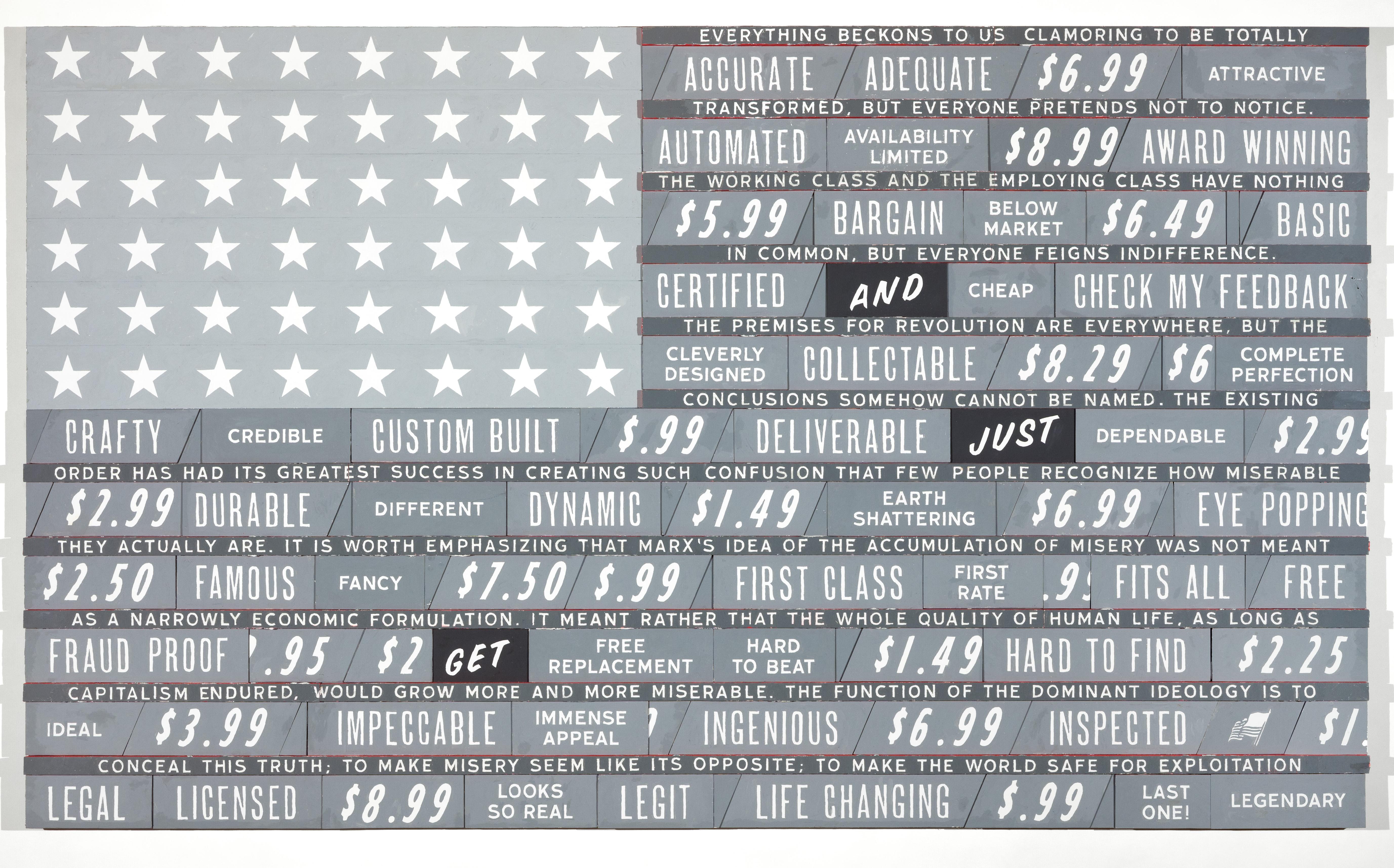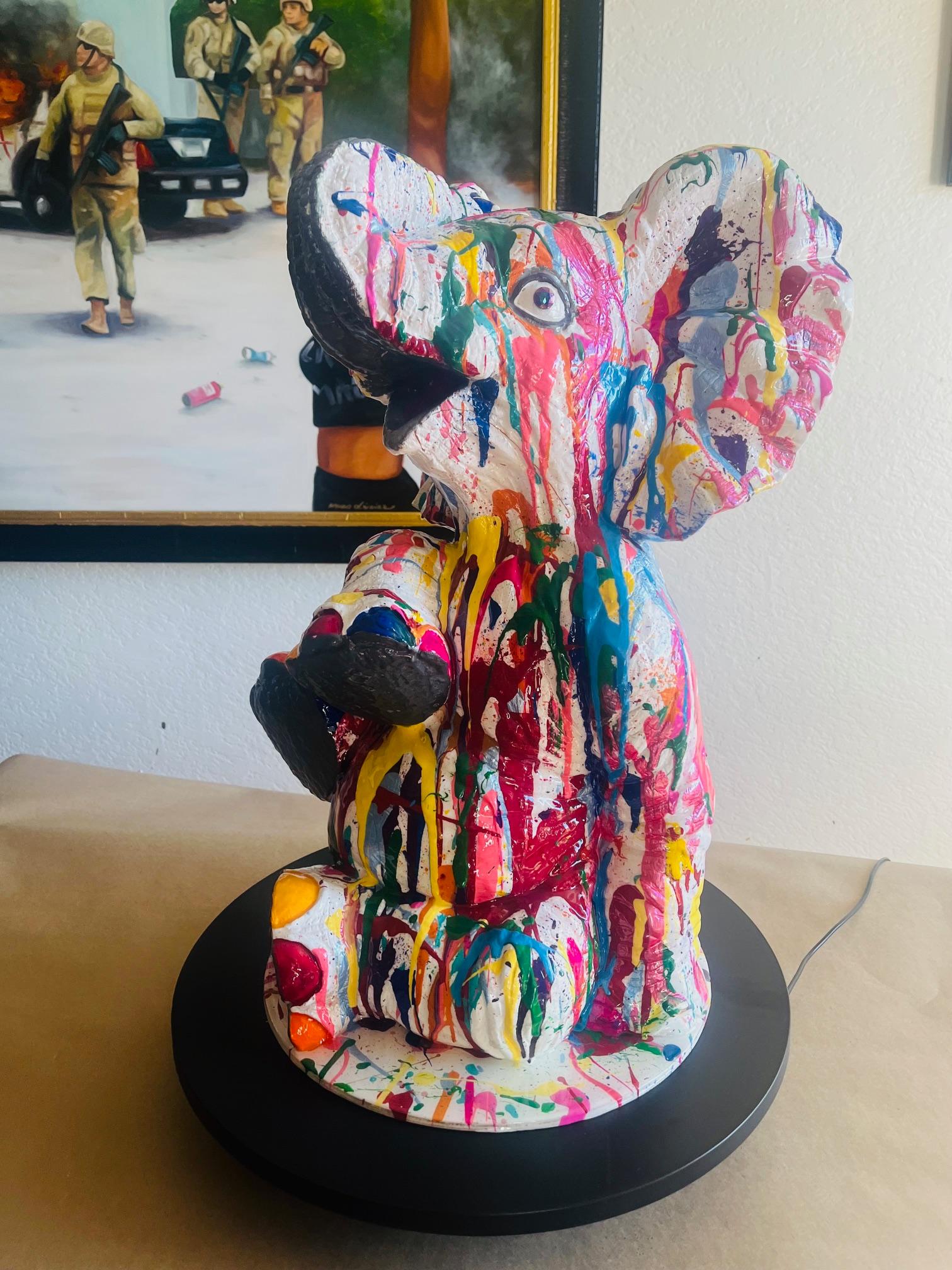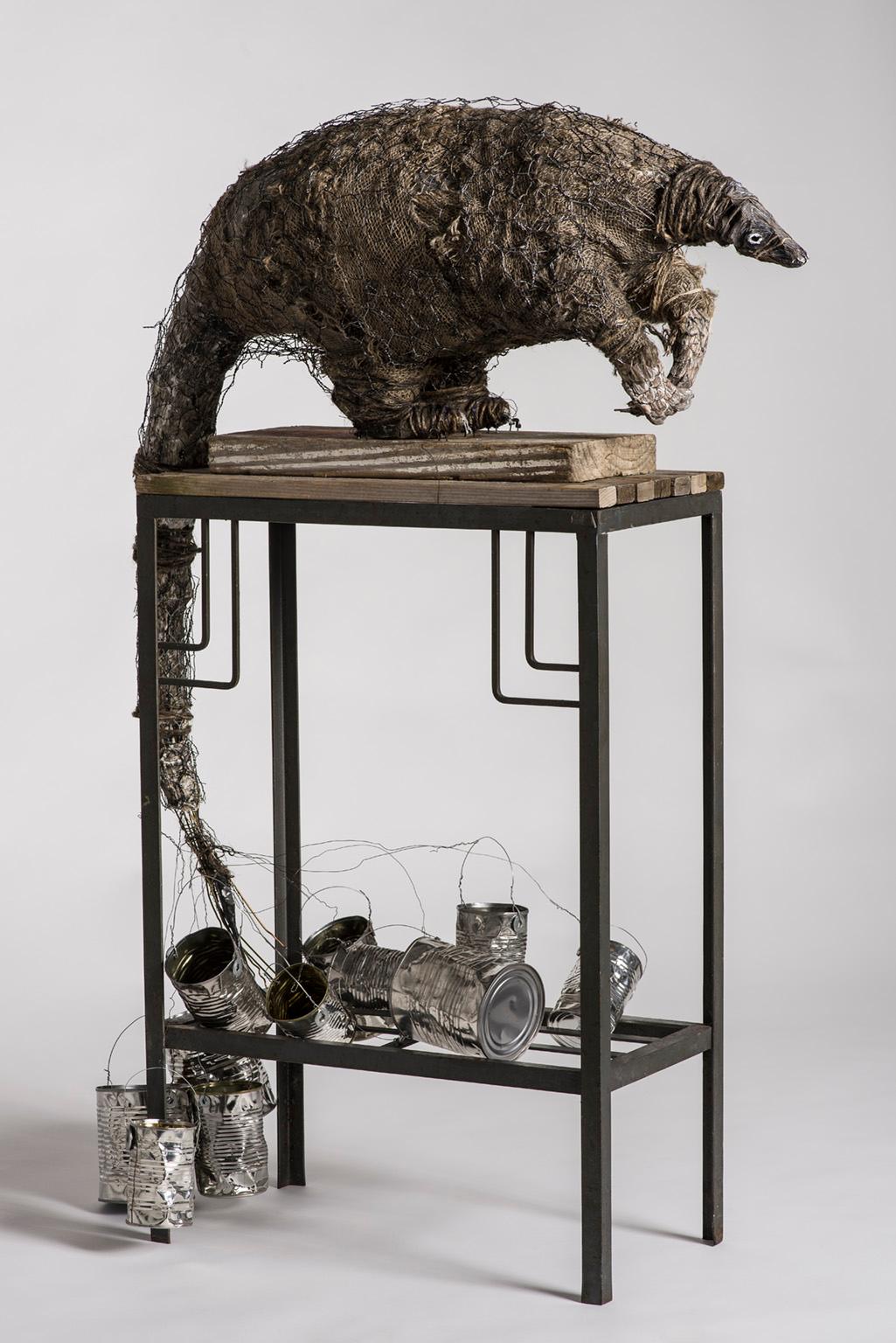Items Similar to Plaster Sculpture Relief Art Deco Plaque WPA Artist Peace Swords to Ploughshares
Want more images or videos?
Request additional images or videos from the seller
1 of 5
George AaronsPlaster Sculpture Relief Art Deco Plaque WPA Artist Peace Swords to Ploughshares
About the Item
Size includes wood mounting.
George Aarons (born Gregory Podubisky, in St. Petersburg, Russia, 1896 - died in Gloucester, Massachusetts 1980) was a distinguished sculptor who lived and taught in Gloucester, Massachusetts, for many years until his death in 1980. He had, many students in the area and he designed Gloucester's 350th Anniversary Commemorative Medal.
Aarons moved from Russia to the United States when he was ten. His father was a merchant. He began taking drawing classes during evenings at Dearborn Public School in Boston as a teenager and went on to study at the Boston Museum of Fine Arts in 1916. Aarons later moved to New York City to study with Jo Davidson, and other Paris-trained masters at the Beaux-Arts Institute. He eventually returned to the Boston area and established studios in Brookline and Gloucester, Massachusetts. During his lifetime, he was recognized internationally and won several prestigious awards. Aarons had studios in Brookline, Massachusetts and Gloucester, Massachusetts where he produced large bronze and marble figures and wood carvings. He produced several projects for the Works Progress Administration including a group of three figures for the Public Garden (Boston), a longshoreman, fisherman and foundry worker, as well as a large relief (1938) for the South Boston Housing Project and façade of the Baltimore Hebrew Congregational Building (1956).
His works are at the Museum of Art in Ein Harod, Israel; Fitchburg Art Museum in Massachusetts, Musée de St. Denis in France; Hilles Library at Radcliffe College in Cambridge, Massachusetts; and Hillel House at Boston University in Massachusetts.
He did reliefs for Siefer Hall at Brandeis University in Waltham, Massachusetts (1950); Edward Filene (the founder of Filene's Department Store and a philanthropist) on the Boston Common; Fireman's Memorial in Beverly, Massachusetts; a memorial to Mitchell Frieman in Boston; the U.S. Post Office in Ripley, Mississippi; and at the Cincinnati Telephone Building; the Combined Jewish Philanthropies building in Boston (1965); and a commemorative medal for the 350th Anniversary of the City of Gloucester, Massachusetts (1972).
Characteristic of his era, George Aarons was among the foreign-born American sculptors of the early 20th century who started their careers as academicians and evolved into modernists and increasingly abstract artists.
Over thirty pieces spanning the length of this sculptor's career were featured in this exhibition, including work in various medium bronze, wood and original plasters. Like his contemporaries, Aarons experimented with direct carving in wood, and he was one of the few academically trained sculptors who consistently cut his own works in marble. His early work was classically inspired figurative work, along with sensitive portraits. Some of his most powerful sculpture comes from his middle period, when he worked through his emotional pain following the global realization of the Jewish Holocaust. He depicted humanity deep anxiety over this tragedy with figures that are at once symbolically charged and movingly beautiful. Aarons late work consists of radically simplified forms that continue to reference the human form and often are carved directly in wood and stone.
Aarons summered and taught classes on Cape Ann for many years before moving to Gloucester full-time with his wife about 1950. While Aarons is best known locally for his domestic-scale works, he also executed numerous monumental, public commissions that can be found throughout the United States in cities such as Washington, D.C.; Baltimore, Maryland; and Cincinnati, Ohio; as well as in France and Israel.
As noted in a Gloucester Daily Times Article, Aarons wanted his sculptures to honor the struggles and nobility of people and rail against the evil done against them. And that was why, even as his work grew more and more abstract, stylized and simplified, he never left behind the form of the human figure that had been his focus from his earliest works.
Aarons told the Gloucester Daily Times in September 1954 that he found it hard to remember at just what age he started studying art, but he recalled that the nude model had to partially dress when he was in class because he was so young. He initially studied painting and drawing at the museum school, but he once said he became fascinated by sculpture when he met an established sculptor at the Copley Society in Boston who invited Aarons to his studio and offered him some clay to "play around" with.
After he graduated, he apprenticed under sculptors Richard Brooks, Robert Baker and Solon Borglum. He worked as a carpenter, shipbuilder, dishwasher and chimney sweep. He fashioned architectural decorations, including figures for fountains and now and then a few commissioned portraits. He returned to Boston by the early 1920s and began to exhibit his own works and get commissions for portraits, fountains and reliefs.
His sculptures from this time are dreamy and romantic in the realistic, academic style of the time. A painted portrait of the young Aarons that is included in the North Shore Arts Association exhibit shows a determined fellow with dark brown hair, a suit and bow tie. However, in 1922, this determined young artist was living with his parents on Calder Street in Dorchester.
In the 1930s, Aarons adopted the streamlined, monumental style of the socialist works of the time. Aarons made money, as he would all his life, from commissions, selling his personal work and teaching sculpture, but the Depression of the 1930s was tough for everyone.
So Aarons found work though the federal Works Progress Administration, one of Franklin Roosevelt's New Deal programs. He received his first major commission when he was asked to create a public sculpture for the South Boston Harbor Village public housing project around 1937. He was elevated to the position of supervisor for the project and received a corresponding $5 pay increase to make his weekly salary $32. The raise convinced him he was fit to marry and he proposed to Gertrude Band, an attractive brunette dancer whom he had been dating for more than a year. They were married before the Harbor Village project was dedicated on Labor Day 1938.
Aarons' design featured a brawny, larger-than-lifesize fisherman, longshoreman and a laborer flanked by a boy and girl at either end to portray the children who would live in the apartments. Aarons elected to do the piece in cast stone to employ carpenters and laborers as well as craftsman for a total of 10 men.
In his sculpture, Aarons focused more and more on the theme of oppressed people as he worried about the spread of fascism and Nazism during the 1930s, World War II and after. He had done pieces during the mid-1930s about the oppression of African-Americans, including "Negro Head," which is in the North Shore Art Association retrospective. After the war, he also delved into Jewish themes and became increasingly known as an important Jewish artist, leading to commissions from Jewish organizations across the country and abroad.
"He gets into raw emotion. Some people describe him as an expressionist because of the emotion (in his work)," Reynolds says.
But Aarons, also sculpted sensual sexual nudes, like Adolescence of 1948, also at the Cape Ann Historical Museum and several in the North Shore Art Association retrospective.
Aarons' sculptures grew increasingly stylized. He depicted people beaten down and writhing in pain, but he focused more and more on the abstract shape and structure of pieces. He often retained the shape of the original block of wood, marble or limestone in the finished pieces.
In 1953, Aarons received a commission to carve a series of reliefs into limestone blocks on the facade of the Baltimore Hebrew Congregation in Maryland.
The most remarkable part of the work is his depiction of the Ten Commandments in two tall tablets. He symbolized the first five, which deal with people's duties to God, with a group of flames climbing up the tablet. He symbolized the next five commandments, which deal with people's duties to each other, with a clod-like texture across the tablet.
Aarons was not a religious man, despite the Jewish subjects in his work.
"I talk in wood, stone or bronze." His statue of Thomas Jefferson decorated the office of the secretary of the treasury in Washington, D.C. His memorial to Edward A. Filene sat in Boston Common. He was commissioned by the city of Gloucester to design a medal to commemorate the city's 350 anniversary in 1972. He had exhibited at the Boston Museum of Fine Arts, Whitney Museum in New York, Dallas Museum of Art in Texas, Cleveland Museum of Art in Ohio, and Corcoran Gallery of Art in Washington, D.C. Locally, his works are on display at the Sawyer Free Library in Gloucester and Manchester Town Hall.
- Creator:
- Dimensions:Height: 8 in (20.32 cm)Width: 10 in (25.4 cm)Depth: 1 in (2.54 cm)
- Medium:
- Movement & Style:
- Period:
- Condition:
- Gallery Location:Surfside, FL
- Reference Number:1stDibs: LU3829617992
About the Seller
4.9
Platinum Seller
These expertly vetted sellers are 1stDibs' most experienced sellers and are rated highest by our customers.
Established in 1995
1stDibs seller since 2014
1,549 sales on 1stDibs
Typical response time: 1 hour
- ShippingRetrieving quote...Ships From: Surfside, FL
- Return PolicyA return for this item may be initiated within 3 days of delivery.
More From This SellerView All
- Texas Artist David Pryor Adickes John F Kennedy Bas Relief Painted SculptureLocated in Surfside, FLDavid Pryor Adickes American (b. 1927) John F. Kennedy bas-relief plaster relief sculpture in artists frame incised signature lower center. with gold stars...Category
20th Century American Modern Figurative Sculptures
MaterialsPlaster, Wood, Paint
- Cuban Master Florencio Gelabert Sculpture Large Wood Carving Bust Man PortraitLocated in Surfside, FLFlorencio Gelabert Y Perez (Cuban, 1904-1995) Hand carved, signed; 1979 Materials: Cuban wood (mahogany?) Dimensions 23 X 4 X 4 inches Label affixed to underside: National Registry of Cultural Assets of the Republic of Cuba Ministry of Culture. Provenance: Art Master Collection, Miami, Florida. Florencio Gelabert, with a style reminiscent of Art Deco and Art Nouveau in a Latin American Expressionist stylization. Carved wood sculpture. Depicts a modernist stylized form of a man in a streamline moderne style. José Florencio Gelabert Pérez (Caibarien, 1904 - Havana, 1995) Cuban musician, sculptor, draftsman and teacher. He graduated from the San Alejandro National Academy of Fine Arts in 1934. He received numerous awards, mentions and recognitions in Fine Arts Halls and Circles. His works are in the permanent collection of the National Museum of Fine Arts. Florencio Gelabert is a renowned sculptor, who made more than twenty solo exhibitions beginning in 1929, several in the National Museum of Fine Arts, and participated in more than thirty collectives in Cuba, Spain and Brazil, the latter in the Sao Paulo Biennial. he traveled from Caibarién to Santa Clara in 1928 to audition to enter the famous San Alejandro Fine Arts School in Havana. He obtained one of the five vacancies. Already in the Cuban capital, he combined fine arts and music. When he graduated, he became a professor in San Alejandro and the academy’s principal in 1960. With a calling common to wood sculptors –which began with his primary school carving carpentry classes and the active life of his home town’s shipyards, his chisels and gouges feverishly turned mahogany, “ácana” and ebony into female heads with black African features dating back to 1930. In 1938 he used his savings to explore Europe: France (Paris, Marseilles), Italy (Naples, Rome, Florence, and Venice), Belgium (Malina). His encounter with the works by Aristide Maillol, Auguste Rodin, Ossip Zadkine, Constantin Brancusi and even with Wifredo Lam, who was also born in another Cuban coastal area, Sagua la Grande, and his encounter with the nude marble David sculpture...Category
1970s Art Deco Figurative Sculptures
MaterialsWood
- Large George Aarons Terracotta Sculpture Relief Art Deco Plaque WPA ArtistBy George AaronsLocated in Surfside, FLTwo Figures (Mother and son) 9" x 17" terracotta sculpture, signed lower left mounted to wood panel, 15 1/2" x 23 1/2" George Aarons (born Gregory Podubisky, in St. Petersburg, Russ...Category
20th Century Art Deco Figurative Sculptures
MaterialsWood, Terracotta
- Czech Art Deco Carved Natural Resin Cubist Owl Bird Sculpture Joseph MartinekLocated in Surfside, FLAmerican sculptor Joseph Martinek was born in Chicago in 1915. He was a second generation apprentice to Auguste Rodin. He studied sculpture at the State Industrial School of Art, Pra...Category
20th Century Art Deco Figurative Sculptures
MaterialsResin, Wood
- Czech Art Deco Carved Natural Resin Cubist Owl Bird Sculpture Joseph MartinekLocated in Surfside, FLAmerican sculptor Joseph Martinek was born in Chicago in 1915. He was a second generation apprentice to Auguste Rodin. He studied sculpture at the State Industrial School of Art, Pra...Category
20th Century Art Deco Figurative Sculptures
MaterialsResin, Wood
- Czech Art Deco Carved Natural Resin Cubist Dove Bird Sculpture Joseph MartinekLocated in Surfside, FLAmerican sculptor Joseph Martinek was born in Chicago in 1915. He was a second generation apprentice to Auguste Rodin. He studied sculpture at the State Industrial School of Art, Pra...Category
20th Century Art Deco Figurative Sculptures
MaterialsResin, Wood
You May Also Like
- Art World Taxonomy (set of books)By Skylar FeinLocated in New Orleans, LASKYLAR FEIN was born in Greenwich Village and raised in the Bronx. He has had many careers including teaching nonviolent resistance under the umbrella of the Quakers, working for a g...Category
21st Century and Contemporary Contemporary Mixed Media
MaterialsPlaster, Wood, Acrylic
- Grey Flag for Franklin RosemontBy Skylar FeinLocated in New Orleans, LASKYLAR FEIN was born in Greenwich Village and raised in the Bronx. He has had many careers including teaching nonviolent resistance under the umbrella of the Quakers, working for a g...Category
21st Century and Contemporary Contemporary Mixed Media
MaterialsPlaster, Wood, Acrylic
- Contemporary Wall Sculpture Painting Installation House Brick ArchitectureBy Gary SczerbaniewiczLocated in Buffalo, NYBridge To Total Freedom No.3 (Diminishing Returns) (2017) by Gary Sczerbaniewicz. Wood, laser-cut MDF, cast plastic, plaster, ink, acrylic, paper.Category
2010s Contemporary Figurative Sculptures
MaterialsPlastic, Plaster, Wood, Ink, Acrylic, Fiberboard, Paper
- POP LUCKY BABY ELEPHANT With Rotating Base.By Mauro OliveiraLocated in LOS ANGELES, CA**ANNUAL SUPER SALE TIL APRIL 25th ONLY** *This Price Won't Be Repeated Again This Year - Take Advantage Of It* The "Lucky Baby Elephants" series is exclusive of Ar...Category
21st Century and Contemporary Pop Art Figurative Sculptures
MaterialsResin, Plaster, Wood, Acrylic
- Suspended Sculpture of Goat: 'Jersey Devil V'By Elizabeth JordanLocated in New York, NYElizabeth Jordan is an artist working primarily in sculpture and whose work uses multiple materials to produce unique, organic forms. In addition to a solo and group shows at Ivy Brown Gallery, she has exhibited at The American Academy of Arts and Letters, the Nassau County Museum of Art, The Cornell Art Museum in Delray Beach, Florida and the New York Artists Equity Gallery. In 2023, she received a 2023 Fellowship from the New Jersey State Council on the Arts in sculpture, and in 2022 was awarded the Alex J...Category
2010s Contemporary Figurative Sculptures
MaterialsWire
- Basket of heads sculpture: 'Men, Women and Children'By Elizabeth JordanLocated in New York, NYElizabeth Jordan is an artist working primarily in sculpture and whose work uses multiple materials to produce unique, organic forms. In addition to a solo and group shows at Ivy Bro...Category
2010s Contemporary Figurative Sculptures
MaterialsClay, Burlap, Plaster, Wood
Recently Viewed
View AllMore Ways To Browse
All Art Deco
Art Deco Canity
Art Deco 1950
1950 Art Deco
Art Deco C
French Mid Century Art Deco
French Deco Art Work
Art Deco Display
French Cut Art Deco
Art De France Art Deco
Art Deco Head
Large Relief
Important Art Deco
Art Deco Size 5
Vintage 1920s Art Deco
Art Deco Style Artists
Art Deco Postes
Art Deco Sculpture In Bronze




